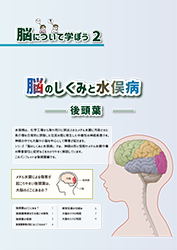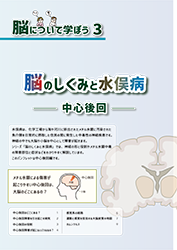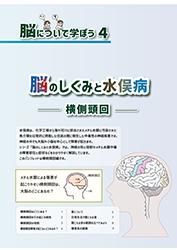Information on publications
Brochure download access section
National Institute for Minamata Disease

[Summary]
An explanation of the historical development of the National Institute for Minamata Disease, along with its organizational chart, activity overview, etc.
Minamata Disease Archives

[Summary]
An explanation of the historical development of the Minamata Disease Archives, along with an exhibition overview, facility guide, etc.
Minamata Disease Archives Exhibition Tour Guide

[Summary]
Guidance for learning activities at the Minamata Disease Archives, which also contains explanations of Minamata disease and mercury in a Q&A format.
Human relationship with mercury

[Summary]
Descriptions of the types of mercury, mercury in fish and shellfish and in the natural environment, changes and circulations of mercury as a result of ingestion into the human body, measurement of mercury in hair samples, etc.
Manual for steps to take if mercury spills

[Summary]
Explanation as to what steps should be taken if a thermometer containing mercury breaks at home, etc. and metallic mercury spills.
MEG Center for Clinical Research on Minamata Disease

[Summary]
Description of the MEG Center, a facility established for the purpose of examining objective means of diagnosing methylmercury poisoning.
Care prevention ―Contribution to community well-being through care prevention―

[Summary]
Description of nursing-care prevention activities in the region affected by Minamata disease that are designed to deliver better welfare for the region.
Rehabilitation for patients with Minamata disease

[Summary]
Description of our outpatient rehabilitation service offered mainly to fetus and infant Minamata disease patients.
Brain's mechanism and Minamata disease: Cerebellum

[Summary]
Explains the form and role of the nerves and the site of damage (cerebellum) and symptoms of methylmercury poisoning.
Brain's mechanism and Minamata disease: Occipital lobe

[Summary]
Explains the form and role of the nerves and the site of damage (occipital lobe) and symptoms of methylmercury poisoning.
Brain's mechanism and Minamata disease: Postcentral gyrus

[Summary]
Explains the form and role of the nerves and the site of damage (postcentral gyrus) and symptoms of methylmercury poisoning.
Brain's mechanism and Minamata disease: Transverse temporal gyrus

[Summary]
Explains the form and role of the nerves and the site of damage (transverse temporal gyrus) and symptoms of methylmercury poisoning.